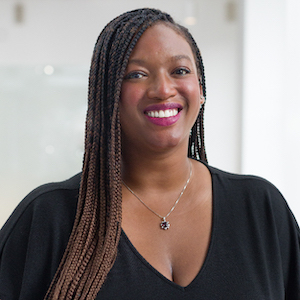

Overcoming the Lack of Diversity in Clinical Trials
How Audience-Centric Health Communications Can Help Achieve Diversity, Equity and Inclusion
Let’s face it: Clinical trials have a diversity problem.
Health equity, and the need for it, has been a topic of discussion for decades. In a post-pandemic world, it’s in even sharper focus. Within that wider conversation, there’s been a push to achieve diversity, equity and inclusion in clinical trials (DEICT). DEICT is important not only because diverse communities of all types deserve representation, but also because it ensures that developed treatments are truly made for everyone.
Healthcare industry stakeholders have already started the work of addressing the problem, prioritizing solutions that solve the issues that prevent DEICT, including awareness, access and low levels of trust in healthcare systems. Regulatory bodies around the world are pushing for actions and developing guidance to inform those actions. Biopharmaceutical companies are working to educate patients about the need for diversity in clinical trial research and data.
So why hasn’t the needle moved far on DEICT? We haven’t quite got it right in terms of meeting patients where they are. WE believes that to make true impact, communications must take an audience-centric approach.
As we look across the industry and the push toward DEICT, there are three challenges that must be addressed to help clinical trials become more inclusive:
1) There Isn't A One-Size-Fits-All Definition of Diversity
Ask anyone how they would define diversity, and you’re sure to get different answers. The same is true on a global scale. What diversity means, and which aspects of it are prioritized, varies from country to country. WE has a unique understanding of what DEICT means globally. As a global agency, we know there is no one way to do diversity.
How is diversity defined in each market? We tapped into our regional leads to get on-the-ground perspectives:
India: “In India, DEI is still largely based on conversations around inclusion of women in the workforce, equal pay, conducive work environment, etc.”
Germany: “DEI in Germany is not ‘race’ (we can’t use that word in Germany since WW2) .... (In pharma) the main focus is on the gender health gap. However, it’s still an academic, HCP-focused discussion and not widely spread.”
Australia: “In Australia, we use the term CALD — or culturally and linguistically diverse. We have an indigenous population often in remote locations. We also have many first-generation immigrants from Southeast Asia, Italy, Greece, etc., who don’t speak English, so we have to think about how we reach those diverse populations and then how we make participation in clinical trials possible for them.”
Only 50% of companies across global regions say race/ethnicity is a top DEI priority. Companies in other regions prioritize other factors like gender, age and disability.
Source: Worldwide ERC, "The Road to Diversity, Equity and Inclusion" July 2023
Diversity is a complex, multifaceted subject. A single definition misses the mark. If we focus too squarely on racially and ethnically diverse communities, we end up ignoring other communities that need to be seen: women, LGBTQIA+, those with disabilities and others. We end up forgetting that no diverse community is a monolith and that many people represent the intersectionality between them.
2) Barriers to Entry Are a Tough Obstacle to Overcome
We need to overcome barriers for diverse communities to enter clinical trials. Although these barriers vary, trust is a primary concern.
For many, there is longstanding distrust of the healthcare system at large that stems from experiences of discrimination, mistreatment and improper actions. This is true for Black patients, pregnant women and LGBTQIA+ people, among others. There are also issues, such as lack of access to care and a perceived lack of transparency about how clinical trial data is used and shared. And even if diverse communities can be convinced to join a trial, diversity of staff is critical. If the trial’s staff does not look, speak and think like them, they are less likely to trust it.
Half (51%) of global patients say they would trust pharmacy companies more if they make clinical research easier to participate in.
Source: CISCRP, "2023 Perceptions & Insights Study"
Building the trust needed to increase clinical trial diversity demands the right perceived balance between risk and benefit. An international survey by The Center for Information and Study on Clinical Research Participation (CISCRP) found that over half of patients around the world (55%) say the possibility of helping advance science and their treatment of diseases is the greatest benefit of clinical research participation. However, the risks currently outweigh the benefits: 81% point to the possibility of side effects as the greatest risk, while 63% cite possible risks to their overall health. For patients, striking that right balance means increased transparency as well as patient engagement efforts and communications that meet them where they are.
3) Conventional Comms Approaches Don't Move the Needle
The good news? Important work is being done to build trust in the healthcare system and in clinical trials.
Across the healthcare landscape, patient education is a primary focus. Although education on the need for diversity in clinical trial research and data is key, we must meet patients where they are to get (and keep) their attention. Many pharmaceutical and biotech companies employ common ideas, approaches and visual conventions in their DEICT communications. The result is generic and formulaic storytelling.
Less than half (47%) of PhRMA member companies surveyed conduct external dialogue events on key DEI topics.
Source: PhRMA, "the Biopharmaceutical Industry: A Sustained Commitment to Advancing Diversity, Equity and Inclusion" April 2024
Best-in-class communications aim to create an emotional connection with patients. The best examples are audience-centric, highlighting personal stories by amplifying diverse patient, researcher and advocate voices, and using language that is easy-to-understand and accessible.
What It Means
The problem with a lack of diversity in clinical trials is clear, but DEICT is achievable. How do we get there? As experts in health equity, WE recommends you:
Frame up an audience-centric conversation rooted in a deeper understanding of the communities you need to reach.
Shift the DEICT conversation away from high-minded virtues and make it more personal. It needs to be about the people, not the ideal.
Speak to the whole clinical trial ecosystem — not just patients but researchers, study nurses, etc. We need to invite more people into this system who, in turn, can create more inclusivity for patients.
Stand out from other industry efforts by speaking directly to stakeholders versus underrepresented communities at large.
Interested in hearing more from WE Healthcare about DEICT? Reach out and let us know at [email protected]. We’d love to connect with you.
The latest blogs from WE
R&D has a Crucial Role in Shaping Corporate Reputation
Holiday Shopping Recap: Key Insights From Our Consumer Team
The Future of Earned Storytelling



